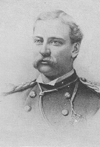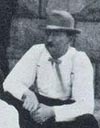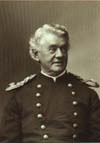John Fox was born in Buffalo, New York, on January 3, 1844. He was a Private in Company D who participated in the hilltop fight during the Battle of the Little Bighorn.
Franklin Rankin, who was also known as Edward Clyde, was a Corporal in Company F who was not present at the battle due to detached service at Powder River. He died of a self-inflicted gunshot wound to his head on January 3, 1895, at Columbus Barracks, Ohio, and was buried in Green Lawn Cemetery in Columbus.
Carl August Bruns was on detached service at the time of the battle. He died in Mandan, North Dakota, on January 4, 1910, and was buried in the Mandan Union Cemetery.
William M. Smith, a corporal in Company B, was with the pack train and in the hilltop fight where he was wounded. He died in Philadelphia, Pennsylvania, on January 4, 1921, and his ashes were buried in the Wenonah Cemetery in Wenonah, New Jersey.
John Pahl was born on January 5, 1850, in Bavaria, Germany. He was a Sergeant in Company H who was wounded in the hilltop fight during the battle.
George Walter Yates (left) married Lucretia Beaumont Irwin on January 5, 1865. They divorced on January 31, 1867, in St. Louis, Missouri. Yates was the Captain in Company F who commanded a battalion and was killed with Custer’s Column.
Max Hoehn (right), a Private in Company L, stayed with the regimental papers at Powder River, so he did not participate in the battle. He died of heart problems on January 6, 1911, in Sturgis, South Dakota, and was buried in St. Aloysius Cemetery there.
Frederick William Benteen (left) was Captain of Company H and commanded a battalion during the battle. He performed scouting duty and participated in the hilltop fight, during which he was wounded. He married Catherine Louise Norman on January 7, 1862, in St. Louis, Missouri.
George Blunt (right) was born on January 9, 1846, in Baltimore, Maryland. He was a Private in Company K who participated in the hilltop fight.
Francis Johnson Kennedy (left) died on January 9, 1924, in St. Paul, Minnesota, and was buried in Calvary Cemetery there. His obituary claimed he was prevented from participating in the battle because of a snake bite. That contradicts other accounts that have him in sick quarters prior to the battle, with the pack train in June, and fighting on Reno Hill during the battle. At some point, Kennedy apparently said he led Capt. Keogh’s horse Comanche.




